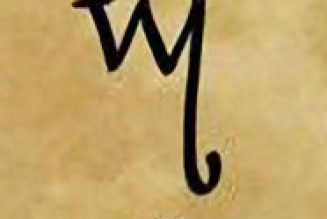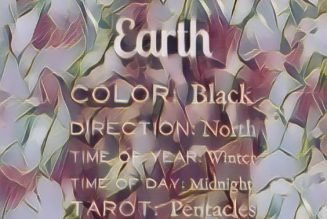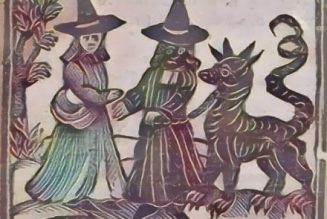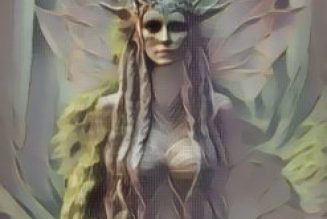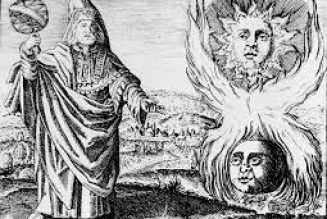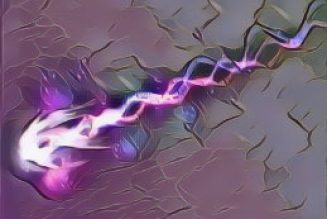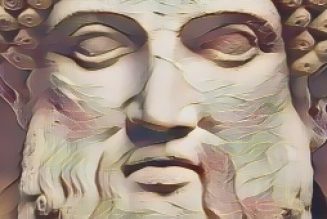Witchcraft is the magical manipulation of energy to bring about change. The energy used by a witch may be environmental, from herbs, stones and other natural objects, or it may come from the witch herself or it may be channeled through the witch from a God or Goddess or from the Earth or Universe at large. Witches are best known for casting spells which tends to incorporate all of these methods in a ritualistic practice. However, one need not engage in ritual or cast a spells to perform magical acts or to be a witch.
Modern Witchcraft
Many men and women consider themselves witches today. The witchcraft these people practice varies widely and may be a spiritual expression of any variety of religions or a secular activity performed apart from religion. There are even atheist witches. Witchcraft takes several forms. Some people cast a circle every month on the full moon, or the new moon or both. Some carefully plan their spells based on the position of the sun, moon and planets. Some folks will cast a spell whenever it is convenient. The nature of the spell also varies. Some cast a circle and perform a complete ritual each time while others will simply settle in, focus their energy, send it out and call it good. Most modern witches create charms of protection for themselves, their homes, family pets and cars, create herbal combination for healing and other uses and occasionally cast spells when time and space permits. Many modern witches wear a pentagram as a protective amulet and to help other witches recognize them. Most witches are solitary, though some are involve in Circles and covens. Witchcraft is a wonderful way to release stress and to help an individual feel that he or she has some control over an otherwise uncontrollable situation. It served an important psychological function for modern practitioners.
Pagan Witchcraft
Many Pagans consider witchcraft to be part of their Pagan practice though the witchcraft they perform may not itself be ritualistic or religious in nature. Pagans often seek to know themselves, their environments and the energies that surround them and witchcraft helps to do this. Not all Pagans practice witchcraft though, though some seem to think that the two terms are synonymous. Some Pagan paths consider witchcraft anathema.
Wiccan Witchcraft
Wicca is a religion based on the perception of ancient pre-Christian magical and spiritual practices. The name of the religion is taken from an ancient name for cunning folk or witches. Many people use the words Wicca and Witchcraft interchangeably, which makes sense etymologically but not always practically. There are many people who practice witchcraft who are not Wiccan. It was once said that every Wiccan is also a Witch, but some Wiccans do not actively practice Witchcraft beyond performing the magico-religious rituals prescribed by the religion.
Christian Views of Witchcraft
According to Medieval Christian doctrine, a Witch is a person, usually a woman, who sells her soul to the Devil in order to obtain magical powers. The Witch often has a demon familiar who helps her out, watches over her and makes sure she maintains her loyalty to Satan. There may be Witches in the world who practice this way but they are few and far between. Satanism is a religion that does not usually (but may) involve Witchcraft and demonology is a different type of lore altogether. Diabolism exists independent of witchcraft, and while there’s no reason a witch couldn’t engage in it, the two practices are not inherently related. There are some Christians who consider themselves witches and incorporate withcraft into their Christian religious observances or practice it as a secular activity quite separate from religion.
Tribal Witchcraft
Anthropologists and other folks who research and catalog the customs and activities of tribal peoples use the word “witchcraft” to define certain phenomena which the modern witch would not recognize as witchcraft. This is just an arbitrary English word that has been applied to something the native people would have completely different word for in the scientific community’s efforts to put a single name on widespread phenomena, just like the word Shaman is often used. In this case, that which is termed witchcraft is used as a means to explain misfortunes as well as to maintain social order. In these societies there tends to be a “witch doctor” who is in the business of identifying witches and undoing the harm they cause. In this scheme a witchcraft accusation may be made against someone who has displayed negative emotions toward the individual who has suffered a misfortune. Jealousy is among the most destructive of these emotions. The witch doctor is called upon to verify the charge and undo the damage. The reversal of the damage usually involves the accused with performing some sort of ritual to heal the other person. In this way hard feelings between individuals are overcome through ritual and anyone who doesn’t want to be accused of being a witch behaves according to status quo and does not have harsh words for his neighbor. It is important to note that in this case the witch may not even know that he or she has caused harm and may not have done so with conscious intent. This is in direct conflict with many modern witchcraft views that hold that magic is impossible without conscious intent. The adoption of Christian beliefs has led to the loss of witch doctors in many tribal areas without anything to functionally replace them. This may be the root of rashes or “witch” murders in tribal areas we periodically hear about today



























